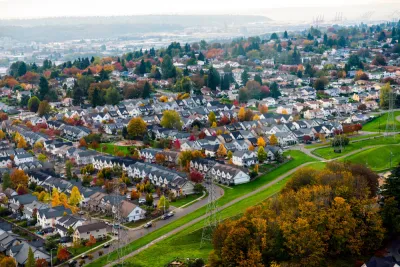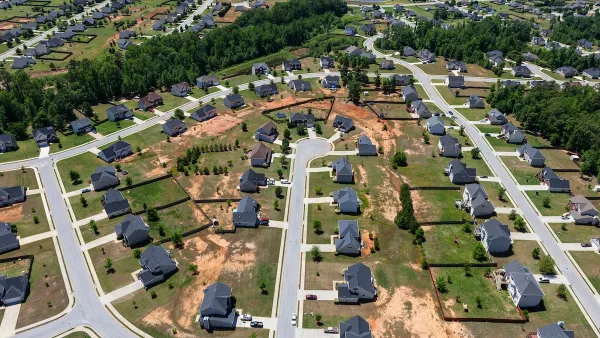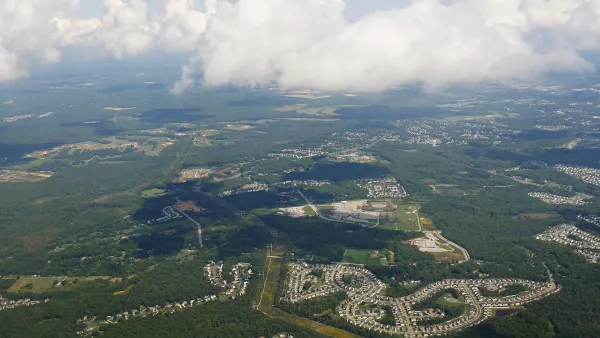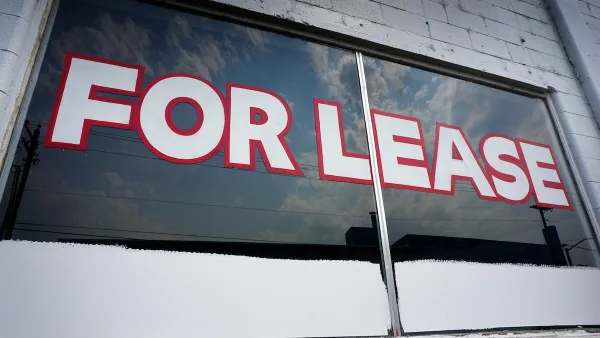The city has developed five concepts for updating its comprehensive plan to increase density and reverse the legacy of exclusionary zoning.

As Seattle updates its comprehensive plan, questions loom about how the city can prepare for a predicted population growth of a quarter million people over the next several decades. In a piece for Crosscut, Josh Cohen outlines the changes proposed so far.
“Seattle’s first comprehensive plan, adopted in 1994, established the city’s urban villages strategy. It concentrated density and new growth to neighborhood hubs along transit corridors, leaving about 75% of the city's residential areas for single-family houses.” Since then, writes Cohen, 83 percent of new homes have been built within urban village boundaries.
According to Michael Hubner, project manager for the city’s comprehensive plan update, that strategy doesn’t address “the legacy of exclusionary zoning in the city.” The city now has five options for concepts that would open up more neighborhoods to denser housing, and is seeking public input.
The comprehensive plan doesn’t set the city budget, but it establishes priorities that city officials are supposed to follow when budgeting. It doesn’t upzone neighborhoods to allow for apartment buildings or new businesses, but it shows city council members where they’re supposed to approve upzones. It’s not a transportation plan that says where new sidewalks and bike lanes will go, but the city’s transportation plan must align with the comprehensive plan.
Pro-growth advocates hope Seattle will choose the ‘Combined Plan,’ which offers the broadest range of options and could make the biggest dent in the city’s inadequate housing supply.
In 2019, Seattle officially changed the name of single-family zoning to ‘neighborhood residential zoning’ in an effort to acknowledge the diversity of the city’s neighborhoods, a step that many density advocates called purely symbolic.
FULL STORY: How Seattle is planning for a quarter million more residents

Analysis: Cybertruck Fatality Rate Far Exceeds That of Ford Pinto
The Tesla Cybertruck was recalled seven times last year.

National Parks Layoffs Will Cause Communities to Lose Billions
Thousands of essential park workers were laid off this week, just before the busy spring break season.

Retro-silient?: America’s First “Eco-burb,” The Woodlands Turns 50
A master-planned community north of Houston offers lessons on green infrastructure and resilient design, but falls short of its founder’s lofty affordability and walkability goals.

Test News Post 1
This is a summary

Analysis: Cybertruck Fatality Rate Far Exceeds That of Ford Pinto
The Tesla Cybertruck was recalled seven times last year.

Test News Headline 46
Test for the image on the front page.
Urban Design for Planners 1: Software Tools
This six-course series explores essential urban design concepts using open source software and equips planners with the tools they need to participate fully in the urban design process.
Planning for Universal Design
Learn the tools for implementing Universal Design in planning regulations.
EMC Planning Group, Inc.
Planetizen
Planetizen
Mpact (formerly Rail~Volution)
Great Falls Development Authority, Inc.
HUDs Office of Policy Development and Research
NYU Wagner Graduate School of Public Service




























